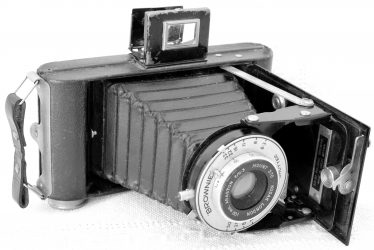What is Photography?
Literally – making pictures with light, or ‘drawing with light’. (From Greek: photo = light; graphy = drawing.) Today, in the 21st Century, we couldn’t live without photography in all its myriad of forms.
Photography is the capture of a moment of time: a place, a scene, a person, a happening, a look, a pattern of light or colour.
Photography can be used:
- to record history;
- for marketing;
- to aid committing crime;
- for crime prevention;
- as evidence in a Court of Justice;
- as evidence for insurance claims;
- to settle disputes;
- to inform;
- to shock;
- to delight;
- as fine art for display;
- to share family occasions.
It can be a form of art, a career or a hobby, or maybe a responsibility as part of a job role.
Photography can be as simple as the click of a smartphone camera or webcam, or as complex as professional video filming, with external microphones and complex lighting and reflectors.
Today, photography can utilise film or digital media; its output can be in monochrome or full colour; on a screen or on paper. It is no longer bounded by what the photographer actually sees at the time – digital processing software enables photographs to be distorted, cloned, merged and colour managed to create something quite different from the original. The old adage that ‘the camera never lies’ is therefore no longer correct.
Digital photography is merely the capture of millions of ‘bits’ (megapixels) of light on sensors and filtered by Red, Green or Blue light to create faithful copies of every colour the eye can see – and all by electrical impulses using the binary system!
Photographic images can arouse many emotions depending on their content: excitement, shock, horror, fear, awe, humour, sadness, happiness, nostalgia, amazement…
Without photography most of us would never have known how awful the conditions were in the trenches in the First World War; what Queen Victoria looked like; what an atomic bomb explosion looks like; how an area looks after a hurricane; the appearance of the moon’s surface or what lurks at the bottom of the sea!
With photography it is possible to pick out family likenesses between children and their ancestors of an earlier generation. Photographic records enhance any family history.
Digital photography can be achieved very cheaply, or it can be very expensive – and everywhere in between!
It is possible to take reasonable pictures on a cheap camera, but better ones on a more expensive camera. It is also possible to take very poor pictures on an expensive camera! Photography is more than the equipment, it also requires training to utilise it fully as a tool or an art form.
Photography is open to persons of any reasonable age, any nationality, colour, race, creed or gender. However, photography in public is restricted in some cultures, and in any culture it is considered at best impolite, and at worst a crime, to photograph a person individually without their permission. But CCTV cameras are everywhere, quietly recording people going about their daily lives, doing things right and wrong, committing crimes, making silly mistakes, or just looking very silly. Dashcams are a fairly new form of photography and can record motoring offences being committed, road accidents happening, and near-misses.
So – whatever your reason for taking photographs or recording videos, whatever your preferred genre or location: be it the wilds of Antarctica, the urban scenes of London, the Australian outback, a Caribbean beach, your studio or simply your local park or backyard – enjoy the freedom that digital photography gives in the 21st century.

